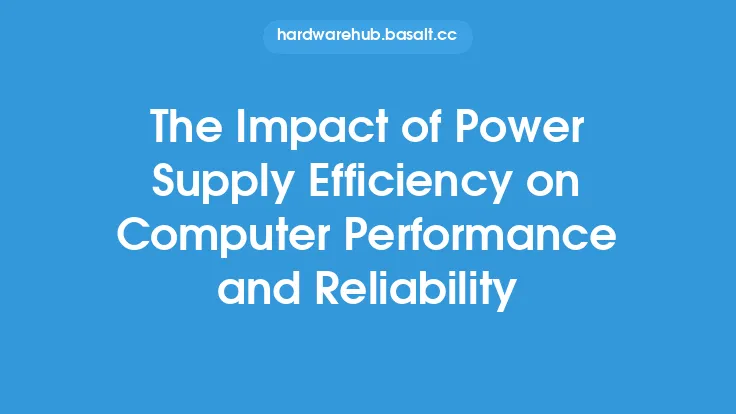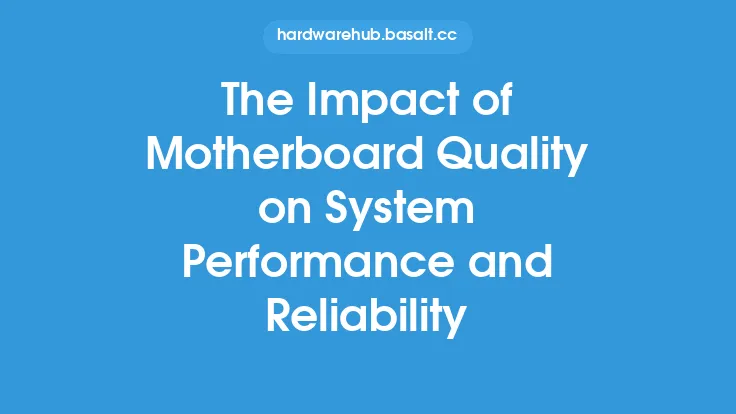Power supply protection is a critical aspect of ensuring system reliability and uptime in various applications, including industrial, commercial, and residential settings. A power supply unit (PSU) is designed to provide a stable and regulated output voltage to the connected load, while also protecting the system from potential faults and anomalies. The protection features built into a PSU play a vital role in preventing damage to the system, ensuring safe operation, and minimizing downtime.
Introduction to Power Supply Protection
Power supply protection refers to the various mechanisms and techniques used to safeguard a system from power-related faults and anomalies. These faults can include overvoltage, undervoltage, overcurrent, short circuits, and other types of electrical disturbances. The primary goal of power supply protection is to prevent damage to the system, ensure safe operation, and maintain uptime. A well-designed PSU with robust protection features can help prevent costly repairs, reduce downtime, and improve overall system reliability.
Types of Power Supply Protection
There are several types of power supply protection, each designed to address specific types of faults and anomalies. These include:
- Overvoltage protection (OVP): prevents damage from high voltage spikes or surges
- Undervoltage protection (UVP): prevents damage from low voltage conditions
- Overcurrent protection (OCP): prevents damage from excessive current draw
- Short circuit protection (SCP): prevents damage from short circuits or faults
- Surge protection: prevents damage from high-energy surges or spikes
- Overtemperature protection (OTP): prevents damage from excessive heat or temperature conditions
Each of these protection types is designed to work in conjunction with others to provide comprehensive protection for the system.
How Power Supply Protection Works
Power supply protection works by monitoring the output voltage, current, and other parameters in real-time. When a fault or anomaly is detected, the protection circuitry is triggered, and the PSU takes corrective action to prevent damage to the system. This can include shutting down the output, reducing the output voltage or current, or activating a warning signal. The specific protection mechanism used depends on the type of fault or anomaly detected.
Benefits of Power Supply Protection
The benefits of power supply protection are numerous and significant. These include:
- Improved system reliability: by preventing damage from faults and anomalies, power supply protection helps ensure that the system remains operational and reliable
- Reduced downtime: by minimizing the risk of damage or failure, power supply protection helps reduce downtime and improve overall system uptime
- Increased safety: power supply protection helps prevent electrical shocks, fires, and other safety hazards
- Reduced maintenance costs: by preventing damage or failure, power supply protection helps reduce maintenance costs and extend the lifespan of the system
- Improved overall system performance: by providing a stable and regulated output voltage, power supply protection helps ensure that the system operates at optimal levels
Importance of Power Supply Protection in Different Applications
Power supply protection is critical in various applications, including:
- Industrial settings: where systems are often subject to harsh environmental conditions and high levels of electrical noise
- Commercial settings: where systems are often required to operate continuously and reliably
- Residential settings: where systems are often used to power critical appliances and devices
- Medical settings: where systems are often used to power life-critical equipment and devices
- Aerospace and defense settings: where systems are often subject to extreme environmental conditions and high levels of electrical noise
Best Practices for Implementing Power Supply Protection
To ensure effective power supply protection, several best practices should be followed. These include:
- Selecting a PSU with robust protection features and a high level of reliability
- Ensuring that the PSU is properly sized and configured for the specific application
- Implementing additional protection mechanisms, such as surge protectors or uninterruptible power supplies (UPS)
- Regularly monitoring and maintaining the PSU and associated systems
- Following proper installation and testing procedures to ensure that the PSU and protection mechanisms are functioning correctly
Conclusion
In conclusion, power supply protection is a critical aspect of ensuring system reliability and uptime in various applications. By understanding the different types of power supply protection, how they work, and their benefits, system designers and operators can take steps to ensure that their systems are properly protected and operate reliably. By following best practices and selecting a PSU with robust protection features, system designers and operators can help prevent damage, reduce downtime, and improve overall system performance.





